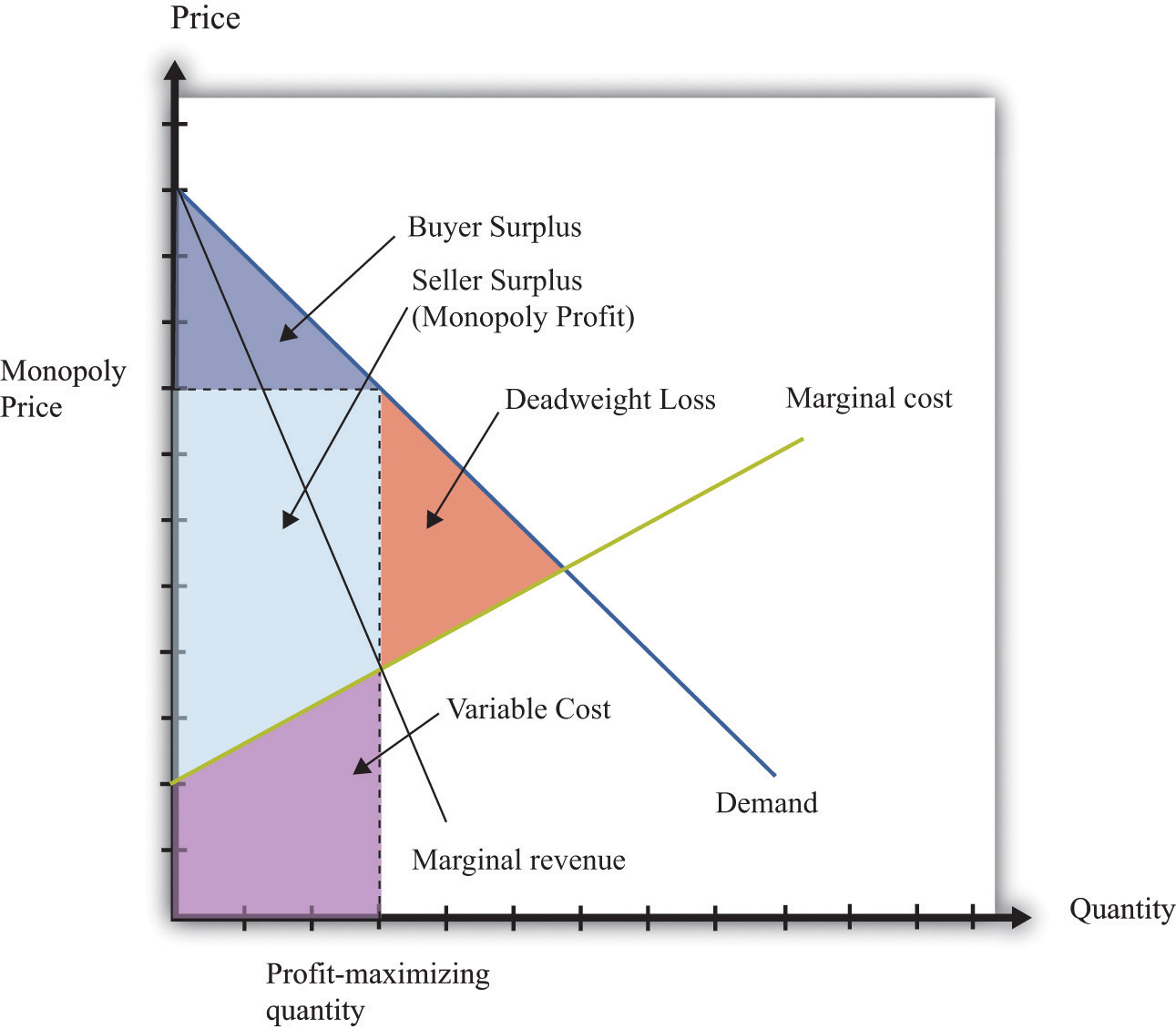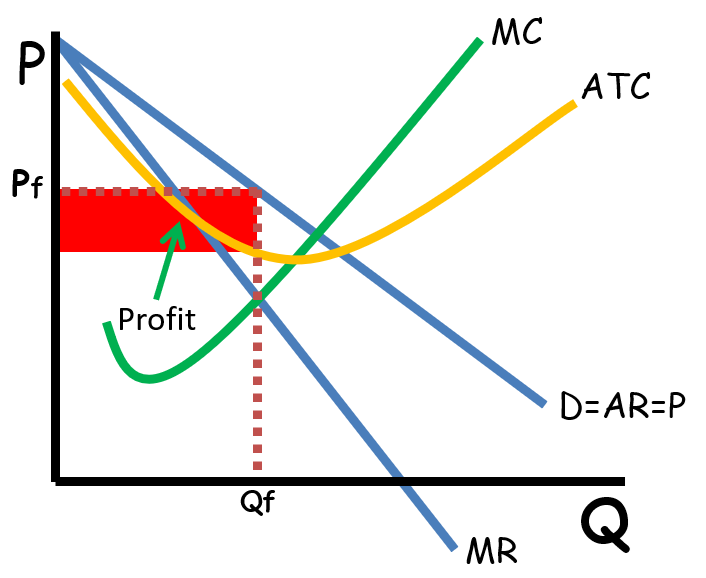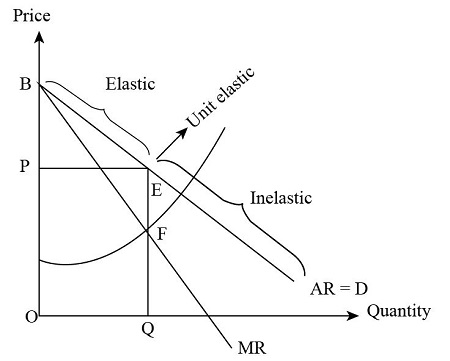In contrast to perfect competition, monopolies have the following characteristics:
- One Seller
- The firm is the market and the market is the firm
- High Barriers to Entry
- Prevents new businesses from entering the market
- If new businesses do enter, it is no longer a monopoly
- Unique Good
- No close substitutes to the products that are sold
- Price Makers
- A combination of the three above factors ensures that monopolies can set their own prices rather than take the market price like in perfect competition
As a monopoly, the firm sets the price, so they can set it high or low. However, they cannot price discriminate. Essentially, if they want to sell another unit for a lower price, they have to also lower the price of the previous units they sold. For example, they can choose to sell at $100, but then if they lower the price to $90, they must lower the price to $90 for everybody.
Demand Curve
Ultimately, the demand curve will be downward sloping, and the marginal revenue curve will be downward sloping with a slope almost twice as steep as the demand curve. Everything else (marginal cost, average total cost) is similar to perfect competition. Below is an example of a monopoly’s demand graph:

Profit/Revenue Maximization and Demand Elasticity
 The section of graph where represents the elastic demand region, and the graph where represents the inelastic demand region, as seen below:
The section of graph where represents the elastic demand region, and the graph where represents the inelastic demand region, as seen below:

This is because in the elastic region, price is falling as total revenue increases. However, when the price is going down and total revenue is also going down, that means we have inelastic demand as proven by the Total Revenue Test.
Allocative Efficiency
The socially optimal quality is exactly where the price (demand curve) intersects with the addition cost of producing those units (marginal cost curve). This is . Since monopolies’ profit maximization point is usually not at the allocatively efficient point, we have dead-weight loss. This is why monopolies aren’t efficient or optimal: society wants to produce units but monopolies would rather produce at the profit-maximizing point, so they make less output and charge exorbitant amounts for it.
As a result, governments often put price ceilings on monopolies to place their output and price at the allocatively efficient point. Implementing per-unit taxes (not lump sum taxes) will shift the marginal cost up, leading to a higher price for less output. Lump sum taxes affect fixed costs so marginal cost, price, and quantity will remain the same.